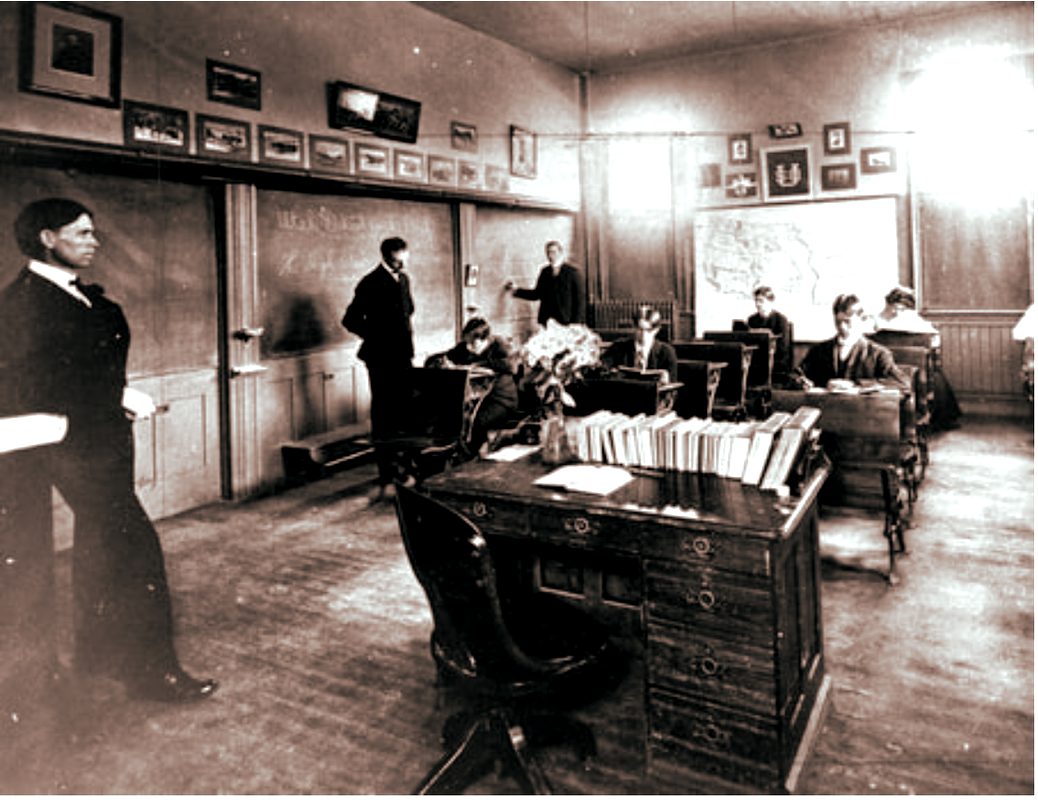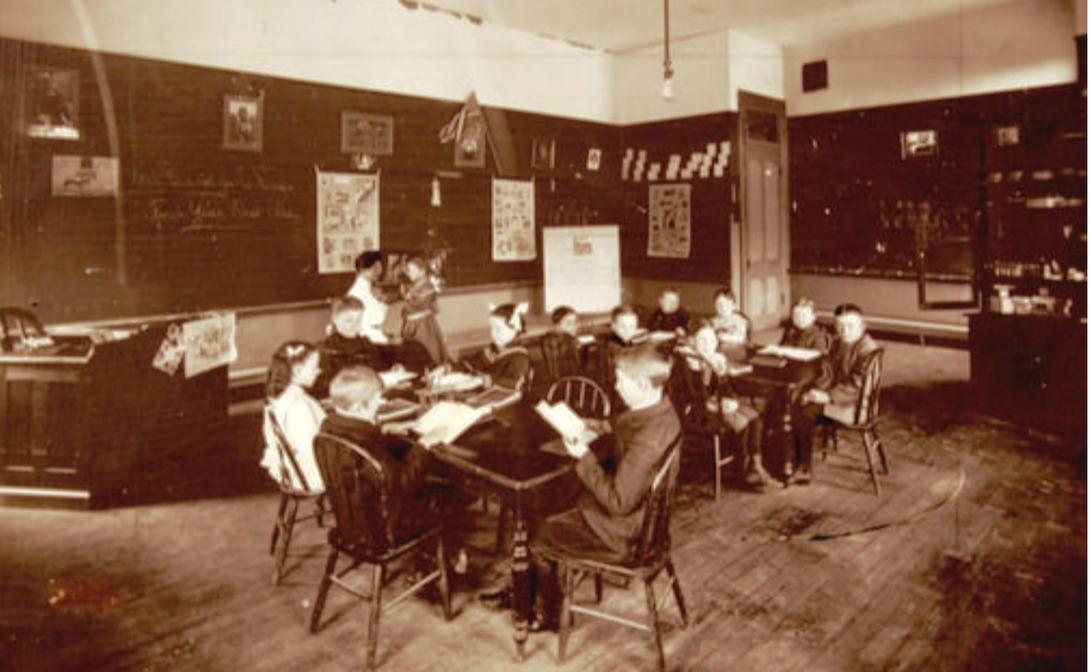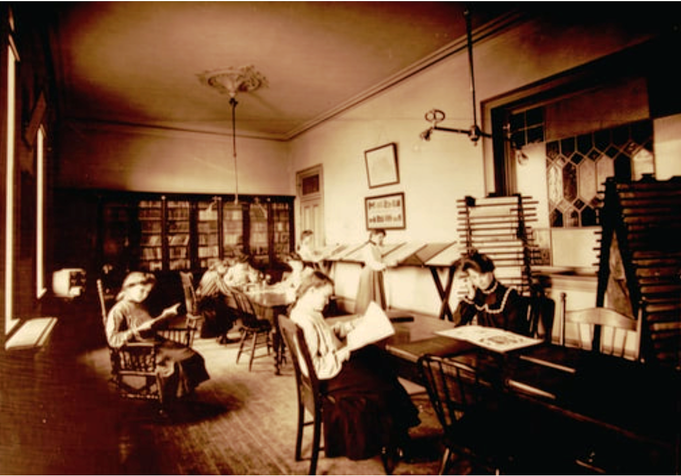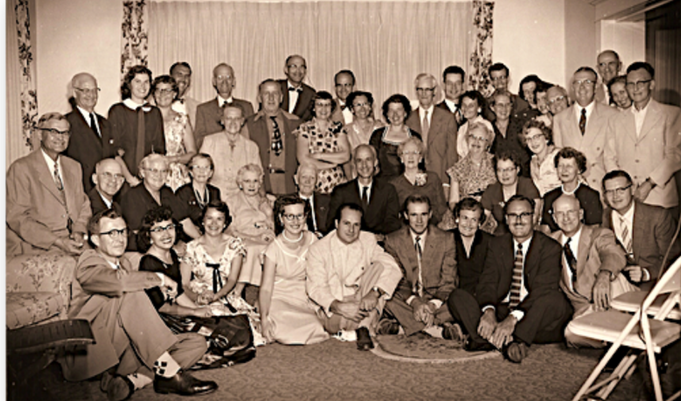The Deaf Education
History in Utah
History in Utah
Compiled & Written by Jodi Becker Kinner
Edited by Bronwyn O'Hara & Valerie G. Kinney
Contributing Editing by Minnie Mae Wilding-Diaz
Published in 2006
Updated in 2024
Edited by Bronwyn O'Hara & Valerie G. Kinney
Contributing Editing by Minnie Mae Wilding-Diaz
Published in 2006
Updated in 2024
Author's Note
Working on the document "The Deaf Education History in Utah" has given me a profound appreciation for the Utah Association of the Deaf and its unwavering advocacy for improved deaf education and services. The document, which includes their names, serves as a testament to the significant contributions of key individuals. I am in awe of the Utah Association for the Deaf and all of its advocates for safeguarding sign language! It's important to note that the intention is not to cast a negative light on the Utah School for the Deaf or any specific parties, but rather to provide a clear historical perspective from the Utah Deaf community and allies, including hearing parents of Deaf children. The absence of a recorded Deaf perspective on the history of deaf education in Utah highlights its importance and the need for recognition. It also recognizes the tireless efforts of the Utah Association of the Deaf, the Utah Deaf community, and the Utah Deaf Education Core Group to preserve American Sign Language and the Utah School for the Deaf, particularly the Jean Massieu School of the Deaf.
I am interested in the history of Dr. Grant B. Bitter, an oral and mainstreaming advocate whose ideologies have had a long-term impact on the Utah Deaf community. Under the leadership of Dr. Grant B. Bitter, a firm advocate for oral and mainstream education, Utah's groundbreaking movement to mainstream all Deaf children began in the 1960s. Dr. Bitter's efforts earned him the title of 'Father of Mainstreaming.' This movement was in stark contrast to the historical significance of Dr. Martha Hughes Cannon, the country's first female state senator and a member of the Board of Trustees of the Utah School for the Deaf and Blind, who in 1896 spearheaded a proposal for the 'Act Providing for Compulsory Education of Deaf, Dumb, and Blind Citizens,' which made attendance at the Utah School for the Deaf and Blind mandatory (Martha Hughes Cannon, Wikipedia, April 20, 2024). Her legislation led to its successful passage in 1896 and marked a turning point in the education of Deaf and Blind children. However, Dr. Bitter advocated for mainstreaming all Deaf children, paving the way for widespread acceptance of this approach in 1975 with the passage of Public Law 94-142, now known as the Individuals with Disabilities Education Act. His daughter, Colleen, was born deaf in 1954, which was another reason for his dedication to the advancement of both oral and mainstream education. Dr. Bitter supported the idea of mainstreaming for all Deaf and hard of hearing children for two main reasons: his own Deaf daughter and his internship experience at the Lexington School for the Deaf. During his master's degree studies, he interned at Lexington School for the Deaf, an oral school, and was shocked to see young children having to leave their parents for a week, often crying and screaming. His role as a father of a Deaf child, as well as his experience, inspired him to advocate for mainstreaming, allowing Deaf children to attend local public schools at home (Grant Bitter: Everett L. Cooley Oral History Project, March 17, 1987).
In the 1970s, Dr. Stephen C. Baldwin, a Deaf educator who served as the Total Communication Division Curriculum Coordinator at the Utah School for the Deaf, shared his observations of Dr. Bitter. Dr. Bitter, a firm advocate of oral and mainstream philosophy, was particularly vocal about his beliefs. His influence, as Dr. Baldwin noted, was profound. Dr. Bitter was a hard-core oralist and one of the top figures in oral education, and no one was more persistent than him in promoting an oral and mainstream approach. Dr. Baldwin also recalled how Dr. Bitter criticized the popular use of sign language, arguing that it hindered the development of oral skills and enrollment in residential settings, which he believed isolated Deaf individuals from mainstream society (Baldwin, 1990). Dr. Bitter's advocacy for the oral and mainstreaming movements sparked a long-standing feud with the Utah Association for the Deaf, a group comprised mainly of graduates from the Utah School for the Deaf, particularly Dr. Robert G. Sanderson, a prominent Deaf community leader in Utah who became deaf at the age of 11 and was a staunch supporter of sign language and state schools for the deaf. The intense animosity between these two giants was due to the ongoing dispute over oral and sign language in Utah's deaf educational system. Their struggle was akin to a chess game, with each maneuvering politically to gain the upper hand in the deaf educational system. This included disputes during oral demonstrations, protests, education committee meetings, and board meetings. Dr. Bitter's advocacy for the oral and mainstreaming movements sparked a long-standing feud with the Utah Association for the Deaf, a group comprised mainly of graduates from the Utah School for the Deaf, particularly Dr. Robert G. Sanderson, a prominent Deaf community leader in Utah who became deaf at the age of 11 and was a staunch supporter of sign language and state schools for the deaf. The intense animosity between these two giants was due to the ongoing dispute over oral and sign language in Utah's deaf educational system. Their struggle was akin to a chess game, with each maneuvering politically to gain the upper hand in the deaf educational system. This included disputes during oral demonstrations, protests, education committee meetings, and board meetings. Dr. Bitter, who opposed anyone who stood in the way of his goals of promoting oral and mainstream education, has formally requested the job removal of Dr. Robert Sanderson and Dr. Jay J. Campbell, both respected advocates for sign language. He believed they were interfering with his mission. Additionally, he expressed dissatisfaction with Beth Ann Stewart Campbell's television interpretation of news in sign language, feeling it did not align with his educational goals. He also asked Della L. Loveridge, a Utah legislator and respected committee chairperson, to resign because she invited representatives from the Utah Association for the Deaf, which he saw as a shift from the committee's focus.
The Utah Association for the Deaf, in the face of Dr. Bitter's opposition, demonstrated remarkable resilience, marking a significant turning point in their history and inspiring others with their strength and determination. They fought relentlessly, eventually passing on the task of continuing the struggle for deaf education equality in Utah to the next generation. The next generation rose to the challenge and established four ASL/English bilingual programs in four regions—Ogden, Salt Lake City, Springville, and St. George. They made significant progress, providing a glimpse of the bright future ahead.
For those who may have concerns about this website, it's crucial to acknowledge and understand the significant impact of Dr. Grant B. Bitter and oral advocates on Utah Deaf history. After all, it is part of our history. As Robert Heinlein famously said, "A generation that ignores history has no past and no future." Understanding the long history of political debate in Utah over the circumstances surrounding Deaf education inequality is not just informative but empowering. It equips us to better advocate for Deaf children's rights to language and communication access.
I've added the documents about 'Deaf Education History in Utah' to the section far below. I am in the process of reviewing and revising those manuscripts and will include them on this webpage rather than in PDF format, as you can see below. Meanwhile, feel free to read those documents and the brief webpages about 'Deaf Education History in Utah.' When you go through the category list, you can find those webpages.
Thank you for your interest in the 'Deaf Education History in Utah' webpage of this website. Your engagement is invaluable to our mission to educate and advocate for the Deaf community and its history in Utah.
Enjoy!
Jodi Becker Kinner
I am interested in the history of Dr. Grant B. Bitter, an oral and mainstreaming advocate whose ideologies have had a long-term impact on the Utah Deaf community. Under the leadership of Dr. Grant B. Bitter, a firm advocate for oral and mainstream education, Utah's groundbreaking movement to mainstream all Deaf children began in the 1960s. Dr. Bitter's efforts earned him the title of 'Father of Mainstreaming.' This movement was in stark contrast to the historical significance of Dr. Martha Hughes Cannon, the country's first female state senator and a member of the Board of Trustees of the Utah School for the Deaf and Blind, who in 1896 spearheaded a proposal for the 'Act Providing for Compulsory Education of Deaf, Dumb, and Blind Citizens,' which made attendance at the Utah School for the Deaf and Blind mandatory (Martha Hughes Cannon, Wikipedia, April 20, 2024). Her legislation led to its successful passage in 1896 and marked a turning point in the education of Deaf and Blind children. However, Dr. Bitter advocated for mainstreaming all Deaf children, paving the way for widespread acceptance of this approach in 1975 with the passage of Public Law 94-142, now known as the Individuals with Disabilities Education Act. His daughter, Colleen, was born deaf in 1954, which was another reason for his dedication to the advancement of both oral and mainstream education. Dr. Bitter supported the idea of mainstreaming for all Deaf and hard of hearing children for two main reasons: his own Deaf daughter and his internship experience at the Lexington School for the Deaf. During his master's degree studies, he interned at Lexington School for the Deaf, an oral school, and was shocked to see young children having to leave their parents for a week, often crying and screaming. His role as a father of a Deaf child, as well as his experience, inspired him to advocate for mainstreaming, allowing Deaf children to attend local public schools at home (Grant Bitter: Everett L. Cooley Oral History Project, March 17, 1987).
In the 1970s, Dr. Stephen C. Baldwin, a Deaf educator who served as the Total Communication Division Curriculum Coordinator at the Utah School for the Deaf, shared his observations of Dr. Bitter. Dr. Bitter, a firm advocate of oral and mainstream philosophy, was particularly vocal about his beliefs. His influence, as Dr. Baldwin noted, was profound. Dr. Bitter was a hard-core oralist and one of the top figures in oral education, and no one was more persistent than him in promoting an oral and mainstream approach. Dr. Baldwin also recalled how Dr. Bitter criticized the popular use of sign language, arguing that it hindered the development of oral skills and enrollment in residential settings, which he believed isolated Deaf individuals from mainstream society (Baldwin, 1990). Dr. Bitter's advocacy for the oral and mainstreaming movements sparked a long-standing feud with the Utah Association for the Deaf, a group comprised mainly of graduates from the Utah School for the Deaf, particularly Dr. Robert G. Sanderson, a prominent Deaf community leader in Utah who became deaf at the age of 11 and was a staunch supporter of sign language and state schools for the deaf. The intense animosity between these two giants was due to the ongoing dispute over oral and sign language in Utah's deaf educational system. Their struggle was akin to a chess game, with each maneuvering politically to gain the upper hand in the deaf educational system. This included disputes during oral demonstrations, protests, education committee meetings, and board meetings. Dr. Bitter's advocacy for the oral and mainstreaming movements sparked a long-standing feud with the Utah Association for the Deaf, a group comprised mainly of graduates from the Utah School for the Deaf, particularly Dr. Robert G. Sanderson, a prominent Deaf community leader in Utah who became deaf at the age of 11 and was a staunch supporter of sign language and state schools for the deaf. The intense animosity between these two giants was due to the ongoing dispute over oral and sign language in Utah's deaf educational system. Their struggle was akin to a chess game, with each maneuvering politically to gain the upper hand in the deaf educational system. This included disputes during oral demonstrations, protests, education committee meetings, and board meetings. Dr. Bitter, who opposed anyone who stood in the way of his goals of promoting oral and mainstream education, has formally requested the job removal of Dr. Robert Sanderson and Dr. Jay J. Campbell, both respected advocates for sign language. He believed they were interfering with his mission. Additionally, he expressed dissatisfaction with Beth Ann Stewart Campbell's television interpretation of news in sign language, feeling it did not align with his educational goals. He also asked Della L. Loveridge, a Utah legislator and respected committee chairperson, to resign because she invited representatives from the Utah Association for the Deaf, which he saw as a shift from the committee's focus.
The Utah Association for the Deaf, in the face of Dr. Bitter's opposition, demonstrated remarkable resilience, marking a significant turning point in their history and inspiring others with their strength and determination. They fought relentlessly, eventually passing on the task of continuing the struggle for deaf education equality in Utah to the next generation. The next generation rose to the challenge and established four ASL/English bilingual programs in four regions—Ogden, Salt Lake City, Springville, and St. George. They made significant progress, providing a glimpse of the bright future ahead.
For those who may have concerns about this website, it's crucial to acknowledge and understand the significant impact of Dr. Grant B. Bitter and oral advocates on Utah Deaf history. After all, it is part of our history. As Robert Heinlein famously said, "A generation that ignores history has no past and no future." Understanding the long history of political debate in Utah over the circumstances surrounding Deaf education inequality is not just informative but empowering. It equips us to better advocate for Deaf children's rights to language and communication access.
I've added the documents about 'Deaf Education History in Utah' to the section far below. I am in the process of reviewing and revising those manuscripts and will include them on this webpage rather than in PDF format, as you can see below. Meanwhile, feel free to read those documents and the brief webpages about 'Deaf Education History in Utah.' When you go through the category list, you can find those webpages.
Thank you for your interest in the 'Deaf Education History in Utah' webpage of this website. Your engagement is invaluable to our mission to educate and advocate for the Deaf community and its history in Utah.
Enjoy!
Jodi Becker Kinner
Acknowledgement
I want to express my deep gratitude to the individuals who played a crucial role in completing the Deaf Education History in Utah project. I am genuinely thankful for their support and contributions. First and foremost, I would like to thank my spouse, Duane, and my children, Joshua and Danielle, for their unwavering patience and support throughout the years I have dedicated to this project. This project has been a decade in the making and would not have been possible without the assistance of many people. I would like to commend Dr. Robert G. Sanderson, Ned C. Wheeler, W. David Mortensen, Lloyd H. Perkins, and other Utah Deaf leaders for their courage and vigilance in protecting the Deaf educational system from the influence of oral education and mainstreaming. I also want to express my deep gratitude and appreciation to my father-in-law, Kenneth L. Kinner, for sharing the intriguing 'Deaf Education History in Utah' with me. This project, which I started in 2006, would not have happened without his support and guidance.
I also want to express my gratitude to several individuals who have supported and contributed to the completion of this project. First and foremost, I am thankful to Dr. Robert G. Sanderson for inspiring me to diligently work on my homework, which ultimately led to the successful completion of this project. I would also like to acknowledge the enthusiastic support and assistance W. David Mortensen and Eleanor McCowan provided during the project. Additionally, I am deeply grateful to my parents, John and Jeanne Becker, for their unwavering support throughout this endeavor. Furthermore, I extend my sincerest thanks and appreciation to Valerie G. Kinney and Minnie Mae Wilding-Diaz for graciously donating their time to revise and edit this document. I also want to thank my editor, Bronwyn O'Hara, for her invaluable contribution to the editing process.
I am grateful to Dr. Bitter for motivating me to write this history and for donating his documents to the J. Willard Marriott Library at the University of Utah. Without his donation, I might not have been able to document the broader context of the oral and sign language controversy, and the history would not have been as compelling without his contribution. Dr. Bitter's documents also helped me connect the missing gaps with materials such as UAD Bulletins, newspapers, and more. I am fascinated by historical events that are intense, random, and unsettling. This history website presents a realistic and honest version of events rather than a rosy or flowery one that some readers may expect. Learning about the darker sides of history allows us to engage in open discussions, listen to each other, learn, and grow.
Lastly, I thank Doug Stringham for sharing the manuscript version with Dr. Bryan K. Eldredge, which facilitated the creation of a senior-level "special topics" class named "Deaf Education in Utah" at Utah Valley University in 2011 and again in 2016. I am also grateful to Dr. Eldredge for teaching this course, raising awareness of the deaf education system in Utah, and advocating for ASL/English Bilingual education.
A big thank you!
Jodi Becker Kinner
I am grateful to Dr. Bitter for motivating me to write this history and for donating his documents to the J. Willard Marriott Library at the University of Utah. Without his donation, I might not have been able to document the broader context of the oral and sign language controversy, and the history would not have been as compelling without his contribution. Dr. Bitter's documents also helped me connect the missing gaps with materials such as UAD Bulletins, newspapers, and more. I am fascinated by historical events that are intense, random, and unsettling. This history website presents a realistic and honest version of events rather than a rosy or flowery one that some readers may expect. Learning about the darker sides of history allows us to engage in open discussions, listen to each other, learn, and grow.
Lastly, I thank Doug Stringham for sharing the manuscript version with Dr. Bryan K. Eldredge, which facilitated the creation of a senior-level "special topics" class named "Deaf Education in Utah" at Utah Valley University in 2011 and again in 2016. I am also grateful to Dr. Eldredge for teaching this course, raising awareness of the deaf education system in Utah, and advocating for ASL/English Bilingual education.
A big thank you!
Jodi Becker Kinner
The Evolution of
Deaf Education in Utah
Deaf Education in Utah
I. National Deaf Education History
II. Origin and Early Beginnings of Utah School for the Deaf
II. Appendix A
III. Controversies Surrounding Communication/Educational Methods and Educational Placement Regarding Interpretation of “Least Restrictive Environment” in Utah
III. Appendices A-Q
IV. The Evolution of the ASL/English Bilingual Teaching Method in Utah
IV. Appendices A-H
V. In Danger: Deaf Education in Utah and Its Impact on ASL/English Bilingual Program as well as Inequality of Deaf Education in Utah
V. Appendices A-I
VI: Final Thoughts on Deaf Education in Utah
II. Origin and Early Beginnings of Utah School for the Deaf
II. Appendix A
III. Controversies Surrounding Communication/Educational Methods and Educational Placement Regarding Interpretation of “Least Restrictive Environment” in Utah
III. Appendices A-Q
IV. The Evolution of the ASL/English Bilingual Teaching Method in Utah
IV. Appendices A-H
V. In Danger: Deaf Education in Utah and Its Impact on ASL/English Bilingual Program as well as Inequality of Deaf Education in Utah
V. Appendices A-I
VI: Final Thoughts on Deaf Education in Utah
See the materials for more information about the Deaf Education History in Utah in the section below:
Social Gathering at Ned C. Wheeler's house,
Ogden, Utah in mid-1950s
Ogden, Utah in mid-1950s
Bottom Row (L-R): Robert Sanderson, Kimito Yokamura, Mary Sanderson, Edith Wheeler, Ned Wheeler, Donald Jensen, Vida White, Kenneth Burdett, Ray Wenger, George Laramie.
Second Row (L-R): Walter Zabel, Arthur Wenger, Marie Stone, ________, Mabel Driggs, Supt. Frank Driggs, Jack White, Katie Woodbury, Theo Logan, Elise Hertell, Georgia Walker, Edna Glenn.
Third Row (L-R): Ivy Low, Cyril Jones, Myrle (Edwards) Jones, Mae Stewart, Afton Burdett, Max Woodbury, Beth Jensen, Violet Zabel, Cleo Thorup, Milo Culter, Carlos Seegmiller, Gladys Wenger, Ralph Glenn.
Top Row (L-R): Frank Stone, Kay (Kinner) Curtis, LaVern Burnett, Joseph Burnett, Carl Hertell, Rodney Walker, Wayne Stewart, Verl Thorup, Robert Welsh, Lorraine Welsh, Hart Wenger.
Second Row (L-R): Walter Zabel, Arthur Wenger, Marie Stone, ________, Mabel Driggs, Supt. Frank Driggs, Jack White, Katie Woodbury, Theo Logan, Elise Hertell, Georgia Walker, Edna Glenn.
Third Row (L-R): Ivy Low, Cyril Jones, Myrle (Edwards) Jones, Mae Stewart, Afton Burdett, Max Woodbury, Beth Jensen, Violet Zabel, Cleo Thorup, Milo Culter, Carlos Seegmiller, Gladys Wenger, Ralph Glenn.
Top Row (L-R): Frank Stone, Kay (Kinner) Curtis, LaVern Burnett, Joseph Burnett, Carl Hertell, Rodney Walker, Wayne Stewart, Verl Thorup, Robert Welsh, Lorraine Welsh, Hart Wenger.
"Nothing about us, without us."
~2012 NAD Conference~
~2012 NAD Conference~




